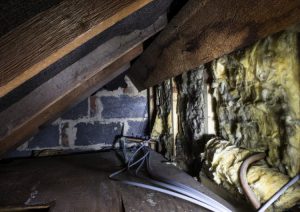Poor indoor air quality triggers respiratory infections like asthma. Here’s how you can test the air inside your home for impurities.
Here’s an unbelievable fact: the air inside your home is usually 2 to 5 times more polluted than the air outside.1 Let that sink in. Given how much attention is given to outdoor air pollution, you would think you are safe inside your home.
The air quality inside your home makes all the difference between dealing with respiratory infections and enhancing your comfort. The most common causes of poor outdoor quality are dust, mold growth, poor ventilation, paint fumes, etc.
Signs you need to do a home air quality test
Americans spend more time indoors than they do outside, which is why indoor air quality should be prioritized. Here are the top signs you need to conduct an air quality test.
- Musty odor- most air pollutants lack scent, but if you notice a persistent musty odor, it could be a sign of mold growth.
- Asthma attacks- poor indoor air quality, especially when it’s contaminated by dust, triggers respiratory infections.
- Constant fatigue- this may be accompanied by light-headedness if the air is full of chemical pollutants.
Other signs include nausea, stained walls, and dry & itchy eyes.
How can you test your indoor air quality?
There are 2 main ways that you could test your indoor air quality:
- Buying an indoor air quality monitor
An indoor air quality monitor is an electric device that regularly tests the quality of air in your home and produces reports on the same. It is fairly affordable and based on the reports it generates, you will be able to take action towards improving your indoor air quality.
Some of the elements that this device tests for include; humidity levels, volatile organic compounds, temperature, and air quality index.
- Testing for toxic gases in your home
There are 2 main gases that not only affect your indoor air quality but are also a health hazard; carbon monoxide and radon.
Carbon monoxide is referred to as the silent killer as it is virtually undetectable (it’s odorless and colorless) and deadly. It also builds up to dangerously high levels in houses that aren’t well ventilated. A carbon monoxide detector will do the trick.
Prolonged exposure to radon is one of the leading causes of lung cancer2, so make sure you seek help as soon as it is detected in your home.
Hire Professionals for Your Home Air Quality Tests
While some indoor air quality problems like dust problems are easily solvable, there are others like mold growth that are more elusive. Hire air quality professionals to test your home’s air quality, identify potential and existing causes of the problems, and fix all issues. If you begin experiencing the symptoms caused by exposure to contaminated air, seek medical attention.
Links to sources used
- The Inside Story: A Guide to Indoor Air Quality – https://www.epa.gov/indoor-air-quality-iaq/inside-story-guide-indoor-air-quality
- Health Risk of Radon | Radon | US EPA – https://www.epa.gov/radon/health-risk-radon#:~:text=A%20smoker%20who%20is%20also,lung%20cancer%20deaths%20every%20year




